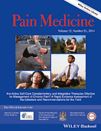Managing Acute and Chronic Pain
Whether brought on by a sudden injury like the blast of an improvised explosive device or built over time from the heavy equipment service members carry, acute and chronic pain can be disabling and a major cause of lost work productivity, increased medical costs and decreased quality of life.
PAIN COMES TO THE FOREFRONT OF CARE
Thanks to improved body armor and battlefield medicine, modern military medicine is unparalleled in its ability to save warriors on the battlefield. However, this has resulted in new challenges: managing the sheer volume of patient’s pain without overmedication, minimizing treatment side effects when dealing with complicated injuries like Traumatic Brain Injuries and Post-Traumatic Stress, and relieving the pain of medically unstable patients during transport.
Through our research and by serving as medical experts and thought leaders, our main accomplishments in combating pain are in the areas of acupuncture, chiropractic care and integrative pain management care.

|
In 2014 Samueli Institute published a Special Issue to Military Medicine:
Are Active Self-Care Complementary And Integrative Therapies Effective For Management Of Chronic Pain?
Learn more
|
PAIN TASK FORCE
In January 2010 Samueli Institute's acupuncture researchers were invited to present to the Army Surgeon General’s Department of Defense (DoD) Pain Management Task Force (TF). Numerous areas of common interest were identified to advance the evidence base for integrative medicine (IM) approaches to pain in military populations.
Samueli Institute's research in the area of pain research were based on the needs identified in the Pain Management Task Force Final Report (May 2010) and Operation Order 10-76 (USAMEDCOM Comprehensive Pain Management Campaign Plan, September 2010).
The Task Force (TF) Final Report divided recommendations into four areas:
- Provide Tools and Infrastructure that Support and Encourage Practice and Research Advancements in Pain Management
- Build a Full Spectrum of Best Practices for the Continuum of Acute and Chronic Pain, Based on a Foundation of Best Available Evidence
- Focus on the Warrior and Family: Sustaining the Force
- Synchronize a Culture of Pain Awareness, Education, and Proactive Intervention
Included in the second recommendation area above, the Task Force addresses integrative medicine (IM) approaches with their objective to, “Incorporate integrative and alternative therapeutic modalities into a patient-centered plan of care;” (OTSG Pain Management Task Force Report, May 2010, p. E-5). Additionally, in laying out a path to move forward, the report specifically provides a mandate to study complementary and integrative medicine, noting: “The DoD should continue to responsibly explore safe and effective use of advanced and non-traditional approaches to pain management and support efforts to make these modalities covered benefits once they prove safe, effective and cost efficient;” (OTSG Pain Management Task Force Report, May 2010, p. E-3).
RESEARCH IN A REAL-WORLD SETTING
Samueli Institute employs an emerging research methodology designed to deliver patient outcomes data and cost benefit analysis in a real-world setting: comparative effectiveness research (CER). CER has been identified by both the U.S. Department of Health & Human Services (HHS) and the Institutes of Medicine (IOM) as a methodology that delivers beneficial information to both clinicians and patients regarding which treatment options best fit a patient’s needs and preferences in a real-world setting. CER can provide information on a patient’s preferences, outcomes, and associated costs all of which are important factors in determining the success of these complementary and integrative approaches.
Acupuncture in the Military
Chiropractic Care in the Military